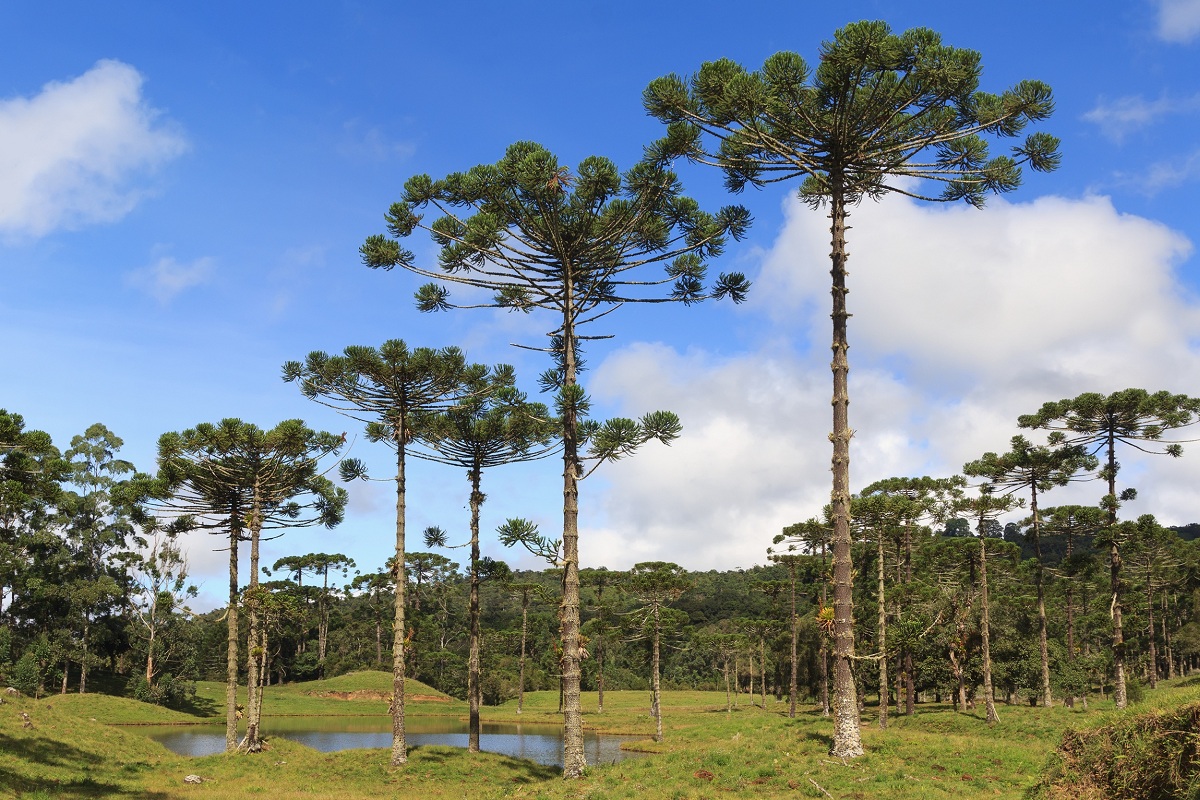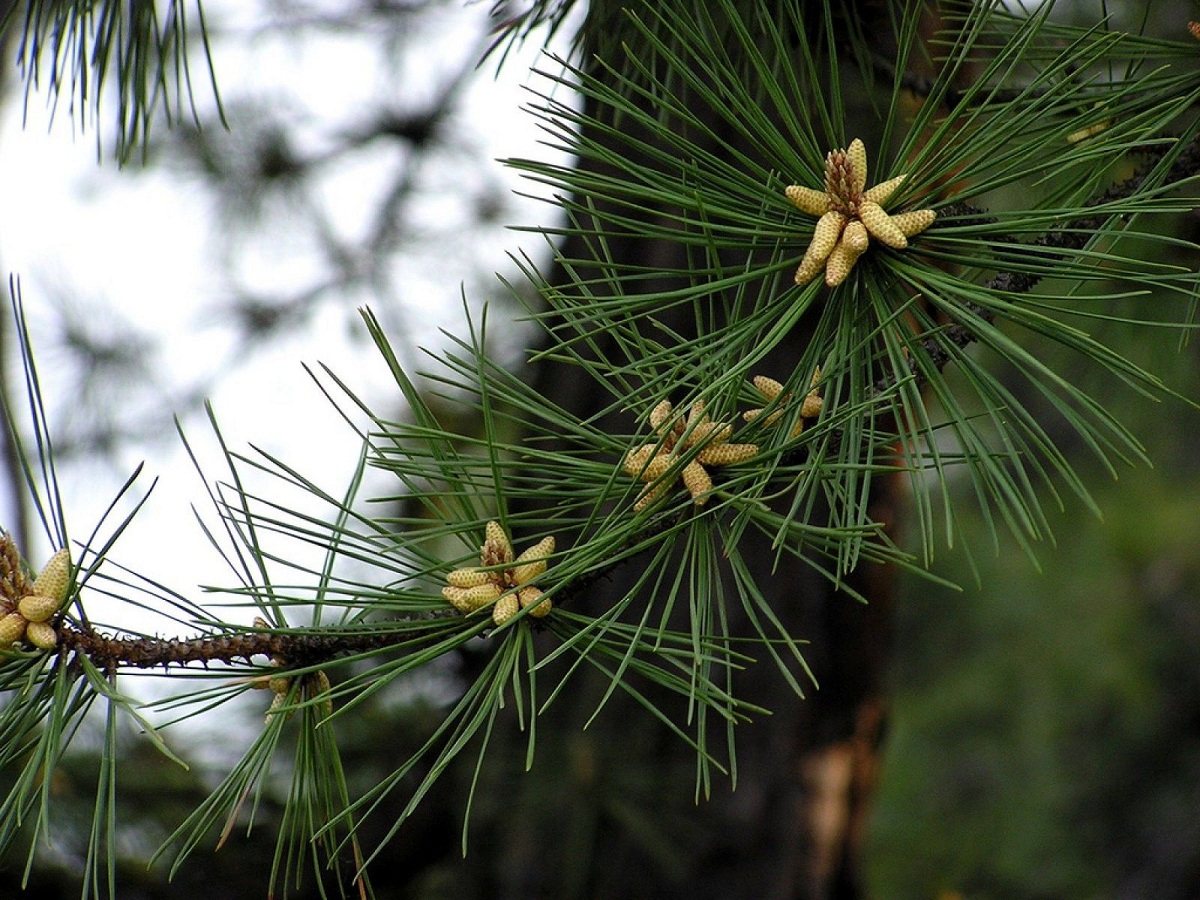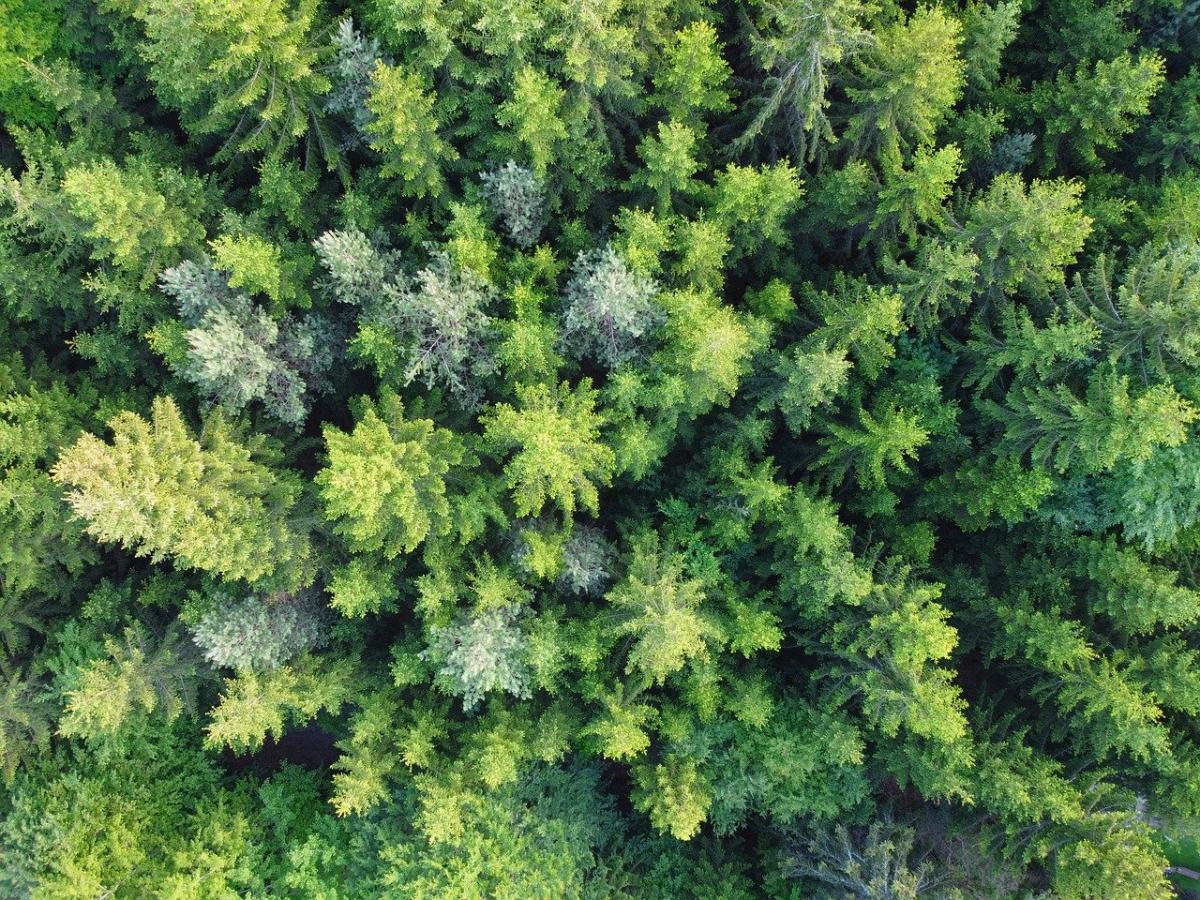
Spermatophyte plants are those that develop from seeds. It is the most evolved group of plants and is divided into two parts: angiosperms and gymnosperms. Although the former are the most dominant, gymnosperms are the most curious and those with unusual characteristics.
Therefore, we are going to dedicate this article to tell you all the characteristics, evolution and curiosities about gymnosperms.
Key features

These are vascular plants spermatophytes that are produced from a seed. They themselves are the ones that generate the seeds from which they will later develop. In Greek the word gymnosperms gives us a clue of all the characteristics they have. And it means bare seed. This makes us already know that its seeds are completely naked and do not develop in a closed ovary.
This group of plants develop in all areas of the world, although we mostly see them in cold and arctic climates. In the taiga we can see a large number of gymnosperms that have been able to adapt to extreme conditions of temperature and precipitation in the form of snow. Some of them are used as ornamental plants by humans or for the production of wood. These plants have a high quality wood. What's more, gymnosperms are plants of great size and longevity. These are traits that clearly differentiate them from other types of plants.
Let's analyze a little more in depth what its strengths are.
Gymnosperms highlights

The main characteristic is the production of a seed that does not develop inside an ovary. In addition, all of them are plants that develop without flowers or fruits. However, its flower can often be thought of as a branch of limited growth that forms cones or cones. Some of them generate fertile leaves also known as sporophylls and that have an exposed seed. The sexes of these plants are separated since there are female cones that produce ovules and male cones that generate pollen.
If we go back to the return of all plants throughout the history of planet Earth we see that they are very ancient plants. In fact, they were the first to be terrestrial plants and produce seeds. Its origin dates to the end of the Carboniferous period. This was possible because the reproduction of these plants to expand their area of distribution can be done without water. And is that many of them are pollinated thanks to the wind. They also have a high resistance to adverse weather conditions such as extreme temperatures and precipitation in the form of snow.
Regarding its appearance and structure, they are woody plants that have an arboreal appearance. Most of them have roots, stems, leaves and seeds. It has vascular tissues that allow them to distribute water and other resources from the roots to the leaves. Thanks to these vascular channels they can feed on the nutrients in the soil. In addition, they can store energy and obtain more nutrients through photosynthesis.
Reproduction of gymnosperms

As we have mentioned before, there are plants with male cones and others, such as female ones. These male bonds are made up of a scale and two pollen sacs that form the pollen grains. The female cones are larger and only contain a scale with two ovules. It can be said that the gametes are the pollen grains that are responsible for fertilizing the ovules.
During the reproduction of these plants, the wind is responsible for transporting the pollen grains to the female flowers. It should be noted that gymnosperms create large amounts of allergies in people. During the breeding season, the wind displaces pollen grains and generate allergies in many people with a vulnerable immune system. Once the wind has transported the pollen grain to the female flowers and the pollen tube penetrates to the ovule, it gives rise to the zygote after the fusion of the gametes.
After fertilization, the seed is generated and the female inflorescence transforms into a pineapple that, after a while, opens to release the seeds. These seeds are responsible for forming new plants when they fall on the ground.
Examples
We are going to see some of the main examples of gymnosperm plants, since there are more than a thousand species divided into 88 genera. Some are well known such as firs, pines, cypresses, junipers, cedars and araucarias, although others not so much. Some examples are the following:
The plants belonging to the group of pinophytes are those known as conifers. There are more than 600 species of plants and they are all woody. There are deciduous evergreen. Most of them have needle-shaped leaves to better survive inclement weather.
- In the group of the Pináceas we have the pines, firs, cedars, larches or tsugas.
- Cupresaceae are junipers, cypresses, and sequoias.
- In the Taxáceas we have the yew
- The Aracauriáceas
- In the Podocarpáceas are the lleuque or the mañío.
Ginkgophites include several extinct species and only one alive. They are often considered as living fossils and the only species that exists is the Ginkgo biloba. Cycads are another group of gymnosperms whose appearance is similar to palm trees. Lastly, gnetophites form vines and small shrubs that have short stems and scaly leaves.
Differences between gymnosperms and angiosperms
We have mentioned earlier that these two plants are the most evolved within the plant kingdom. Both are spermatophyte vascular plants that produce seeds. However, there are strong differences between one of them:
- Angiosperms have seeds surrounded by fruits, while gymnosperms are bare seeds.
- Gymnosperms they do not have typical flowersrather, they usually have cones.
- The leaves of angiosperms are usually flat, while gymnosperms They are needle to be able to adapt to adverse weather conditions.
- Angiosperms are seasonal plants, while gymnosperms are perennial most of them.
I hope that with this information you can learn more about gymnosperm plants and their characteristics.